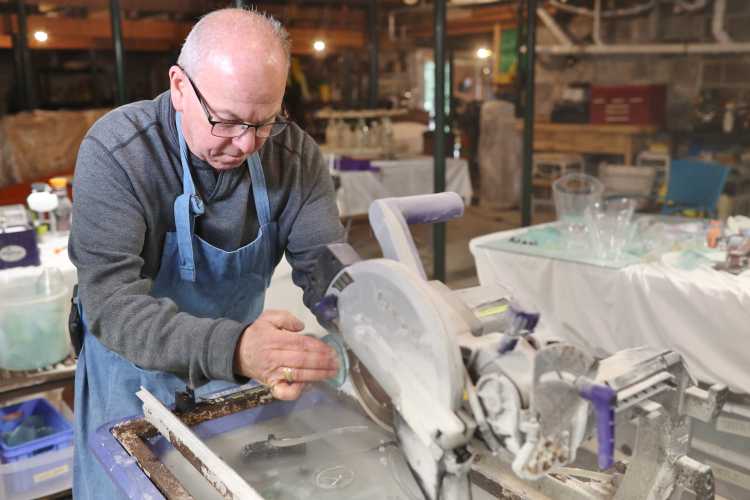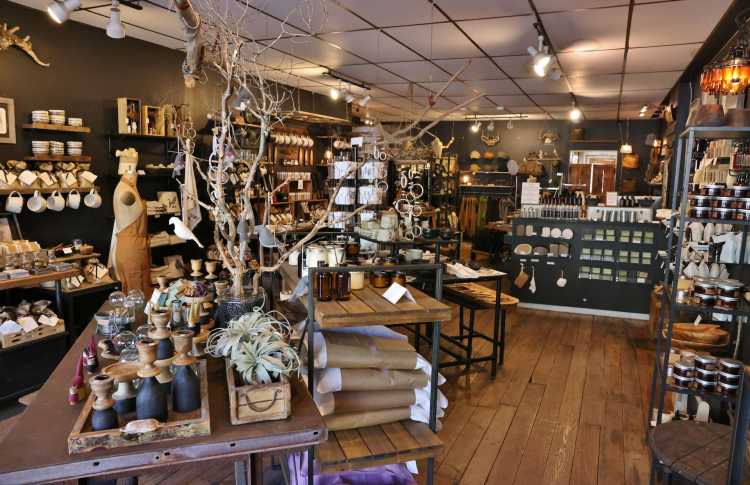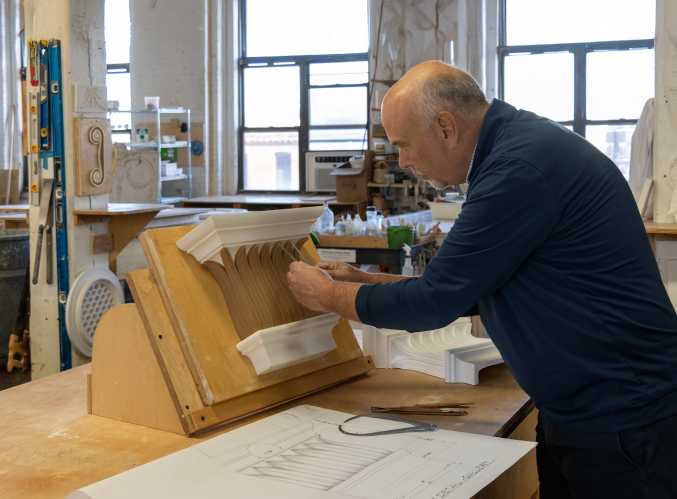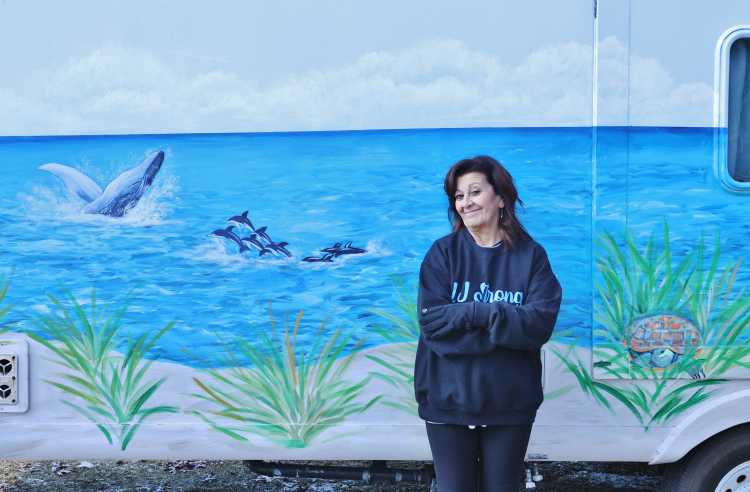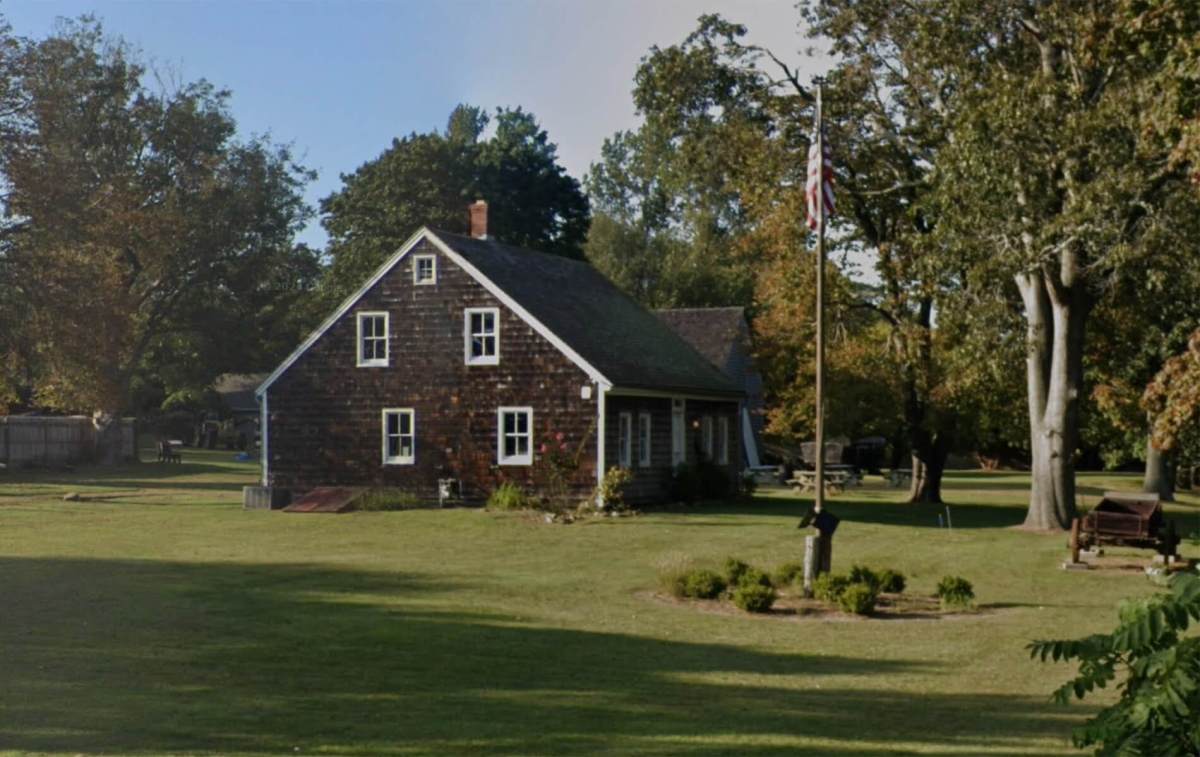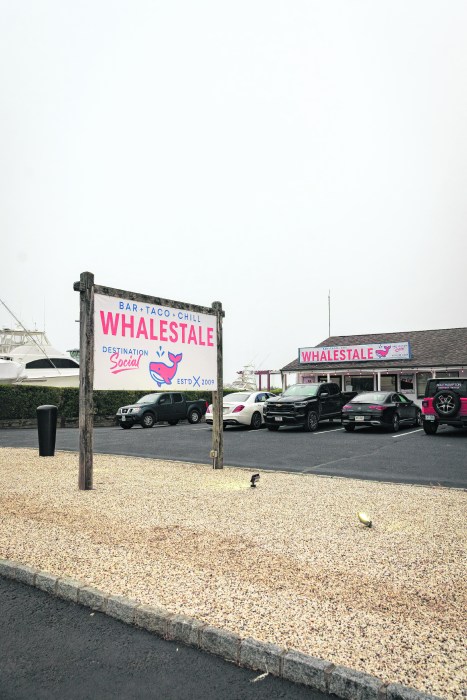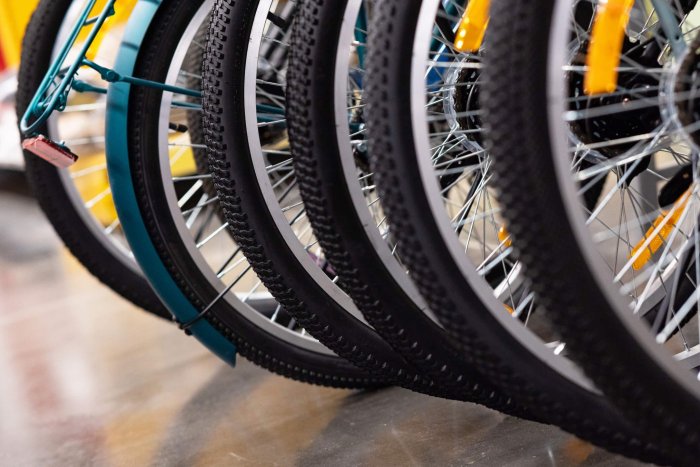When Randy Hoffman was laying in his bed a year and a half ago he didn’t imagine he would be back building high-end cabinetry like he did before a spinal surgery went awry.
“I’m shocked at how quickly I got back into it. I didn’t expect weeks out of rehab, weeks out of being at San Simeon, being able to get back into woodwork,” he says.
Hoffman is a self-employed cabinetmaker who also built, restored and raced vintage motorcycles. In addition, he is a well-known volunteer critical care technician in East Hampton.
On December 5, 2019, he underwent an anterior cervical discectomy and fusion to correct nerve damage in his arm at a well-respected hospital in New York City. A routine, two-hour spinal procedure. He would be released the next day and he would be back at his shop a few days later.
But, it went devastatingly wrong. He woke up only able to wiggle one finger.
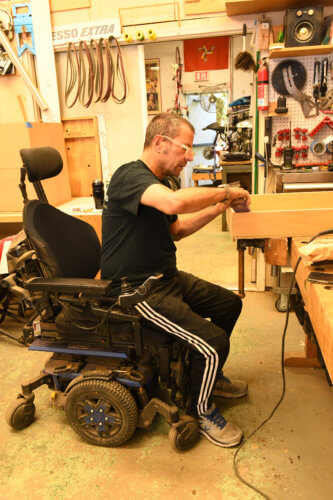
MRIs showed bleeding around his spinal cord. He was paralyzed from the neck down. Three more surgeries followed in a 30-hour period.
While doctors said he would fully recover as the swelling went down, it would take time.
Hoffman, now 60, was physically fit. He bicycled 20 to 30 miles every day before the surgery. He lost 38 pounds while his muscles atrophied. He had to relearn to do everything. Then there was the emotional toll.
While at an acute rehab facility at Mount Sinai, he regained the use of his hands, a painful process as the nerve endings returned.
In an interview last summer, he recalled how he read a medical document that referred to him as a quadriplegic. “That’s when I really got very upset, because then I was like, ‘shit.’”
Just weeks before the pandemic, Hoffman was transferred to San Simeon on the Sound in Greenport. Though mostly known as a nursing home, it has the kind of physical therapy he required. He also wanted to be closer to home.
When COVID arrived in New York, San Simeon was quick to close its doors to visitors, successfully keeping the virus at bay, while it ravaged other facilities. For nearly three months, Hoffman went without visitors.
He took his first steps standing between parallel bars in physical therapy and soon they had him using a walker during sessions.
While he had his rehabilitation to focus on, “The rest of the 23 hours, you’re just kind of reading and doing whatever,” he says. He describes San Simeon as “a wonderful place,” but Hoffman was restless. “At the end, it was getting pretty boring. I was running out of videos to watch on YouTube.”
“One of the amazing things that I saw when I was doing nothing, well, I wasn’t doing nothing,” he says of his time, particularly in rehab at San Simeon, “The time I had off, I was watching a lot of YouTube videos. I saw this blind machinist. He lost his sight and he has continued to be a machinist — completely blind.”
“He makes pens in a milling machine. He has a digital readout that speaks to him,” Hoffman explains. “You see what people do and you just think, ‘What am I complaining about? I can’t walk. That’s nothing.’”
Hoffman had been in woodworking since he got out of art school in New York City in the mid-1980s. A woodworker he knew needed some help doing interior work for a yacht, and he thought, “I’ll figure it out.”
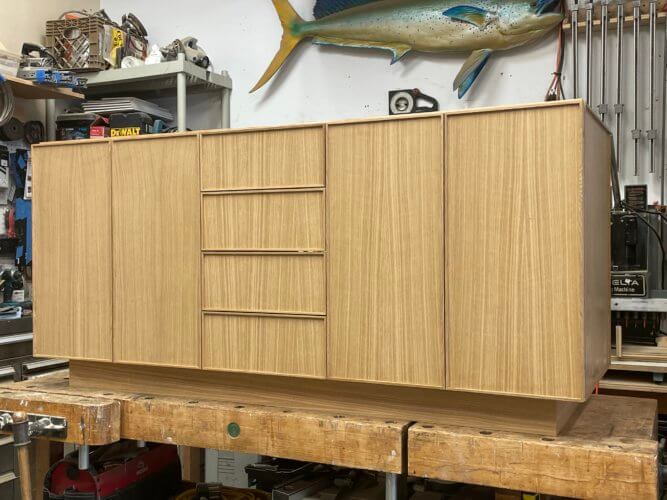
“It’s sort of my personality to think about something I want to do and figure out how to do it,” he says.
He ended up with a successful set design business for fashion advertising. “Then September 11 happened and we moved out here,” Hoffman explains.
Hoffman was walking to his shop on Crosby Street, between Broome and Spring Streets, when “I watched the first plane fly into the building,” he explains. “My kids were little — one was 3 years old and the other one had just been born. Shortly after that we started discussing, ‘Did we want to bring our kids up in the city?’”
He and his then-wife decided to sell their apartment and moved to Amagansett.
For the last 20 years, he has been building cabinets on the East End. He considers himself a cabinetmaker, not a woodworker, he says. “I don’t particularly love wood,” he explains, adding that he doesn’t sculpt wood into beautiful bowls and other similar objects. “That’s what I consider someone who is a woodworker.”
“I build boxes — a lot of kitchens and bathroom vanities.”

Don’t let his humbleness fool you. The work is quite exquisite.
“My stuff is very modern. I don’t do traditional cabinetry — I can, I have. I prefer to do very modern-looking stuff.”
As of late, he has been working with rift-sawn white oak, which is on trend.
“While I was in the hospital, now it’s a year and a half ago, I wasn’t sure I would be able to do woodwork again,” he says. “Lifting sheets of plywood and work – ing with a table saw did not seem possible.”
But when he left rehab in June 2020, he longed to get back to his shop.
As it turned out, a high-end cabinetry job that he designed before his surgery, was, 10 months later, ready for his work soon after he left San Simeon. “The contractor called me up and said, ‘We’re ready for you’”
As is his nature, he figured out how to make it work.
Hoffman’s shop neighbors help him lift sheets of ply – wood. His electric wheelchair rises and lowers so he can achieve the right height, even when he needs to push wood through the sliding table saw. He uses canes to stand. He is able to use the wheelchair to help move items around, too.
“Most of the time, I’m sitting in the chair. I really can’t stand up all day long. I get very tired at the end of the day,” he says.
One of the trickiest things has been not bumping into cabinets with his wheelchair, which has a fairly big turning radius.

Hoffman says it all comes down to adapting. “If you need to make a jig to hold something because you can’t hold it in a traditional way, make a jig. When installing a kitchen, I need help. I’m not scared to ask for help.”
Work has continued to come in since he’s been back at the shop. Asked if the process takes longer, he says, “It’s hard to tell. I’ve gotten faster. Not twice as long, a bit longer. I do get tired. Everything hurts all the time. I have nerves regenerating. I’m still trying to rebuild muscle.”
He continues doing physical therapy three days a week.
One thing is clear, the quality remains the same.
“I really enjoy getting up and going to work,” he says. “It’s helping in my recovery.”
Randy Hoffman can be reached at 631-537-6152.
This article appeared in the Labor Day issue of Behind The Hedges magazine. Read the digital edition here.


